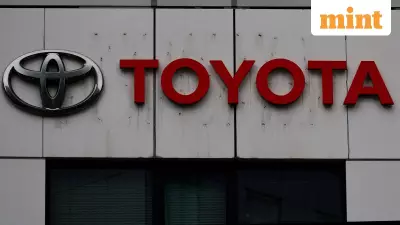
In India's fast-paced economic environment, an increasing number of credit card users are turning to cash advances to tackle unexpected financial shortfalls. This feature, while providing immediate relief, is a double-edged sword that demands careful consideration.
What is a Cash Advance?
Manish Shara, Co-founder and CEO of ZET, explains the core concept. "A cash advance allows cardholders to withdraw cash using their credit card, offering quick access to funds when needed," he states. However, he immediately highlights a critical caveat: "While it provides instant liquidity, it's also one of the costliest forms of credit." The fundamental difference from regular card use is the absence of an interest-free grace period. Hefty fees start accumulating the moment the transaction is completed, a detail often missed by first-time credit users.
The Hidden Costs and Key Limitations
When you opt for a cash advance, the amount is simply deducted from your available credit limit. However, this comes with several attached strings that significantly increase the cost.
First, you are charged a cash advance fee, typically between 2.5% and 3% of the withdrawn amount, or a fixed minimum charge, whichever is higher.
Second, and most critically, interest begins accruing immediately. Unlike regular purchases where you get a grace period of several weeks, there is no respite with a cash advance. This immediate interest accumulation can make the entire process extremely expensive.
Furthermore, your access to cash is not unlimited. Financial institutions impose a cash withdrawal limit, usually 20% to 40% of your total credit card limit. This is a risk-control measure designed to prevent borrowers from accumulating unmanageable debt.
Weighing the Advantages and Disadvantages
Before heading to an ATM, it's crucial to balance the pros and cons.
The Pros:
- Instant Cash Access: It is a viable solution during genuine emergencies when traditional loans are not an option.
- No Documentation: Unlike a personal loan, no new paperwork or documentation is required.
- 24/7 Availability: Funds can be accessed at any working ATM, across India or internationally.
- No Credit Check: The transaction does not require a separate loan approval or credit score assessment.
- Flexible Usage: The withdrawn money can be used for any purpose, from medical emergencies to travel or rent.
The Cons:
- Exorbitant Interest Rates: The annual interest rate is staggeringly high, typically ranging from 35% to 45%, and it starts from day one.
- High Transaction Fees: The combined cost of the cash advance fee and ATM charges can sharply inflate your total repayment amount.
- No Interest-Free Period: The benefit of a grace period is completely absent.
- No Reward Points: These transactions do not earn you any cashback, reward points, or help in building your credit profile.
- Negative Credit Impact: High credit utilisation and carrying a large balance can negatively affect your credit score. Rapidly compounding debt can also become a significant financial and emotional burden.
A cash advance should be viewed strictly as a quick fix for urgent situations, not a regular financial tool. It is best reserved for genuine, unforeseen emergencies, and the amount should be repaid as promptly as possible to avoid the snowballing effect of compound interest.
For planned expenses, alternatives like personal loans or Buy Now Pay Later (BNPL) options are generally more credit-friendly and affordable. Always conduct proper research and consider consulting a certified financial advisor before making a decision.





